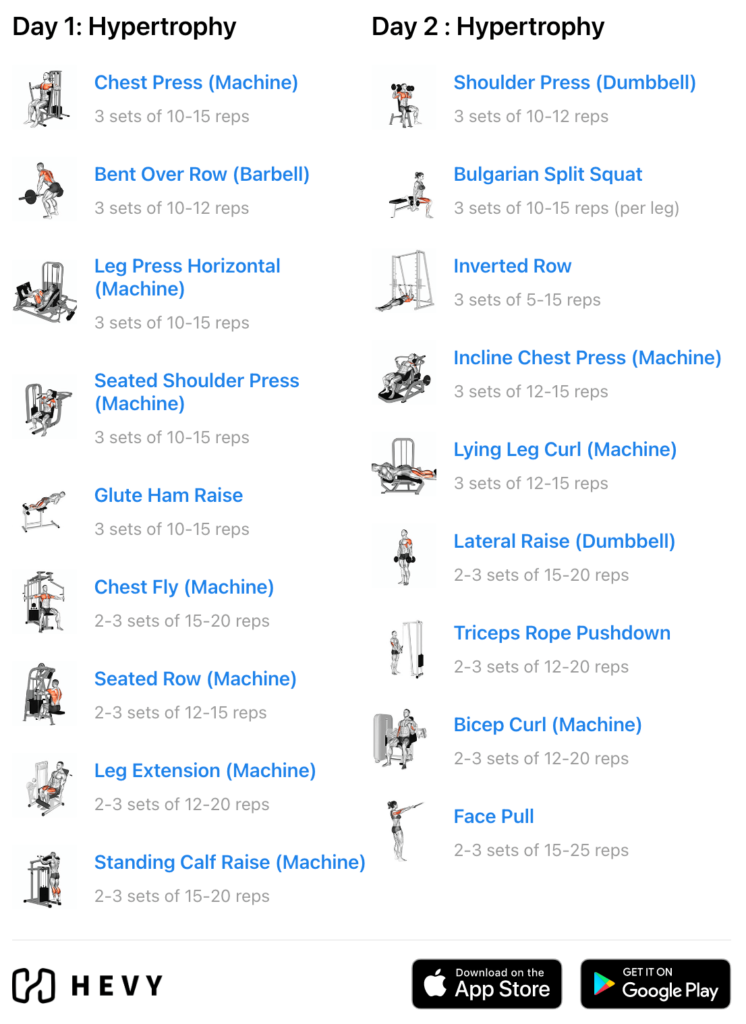
Optimizing Your Workout Routine with Split Full Body Training
Understanding Split Full Body Training
Split full body training is a comprehensive workout regimen that targets different muscle groups on separate days. Unlike traditional full body workouts where all muscle groups are trained in a single session, split full body training divides the body into specific regions, allowing for greater focus and intensity in each workout.
The Science Behind Split Full Body Training
This training method is based on the principle of muscle recovery and adaptation. By allowing adequate rest between training sessions for each muscle group, split full body training maximizes muscle growth and strength gains. This approach also prevents overtraining and reduces the risk of injury, ensuring sustainable progress over time.
Designing an Effective Split Full Body Routine
A well-designed split full body routine typically includes workouts targeting different muscle groups on different days of the week. Common split routines include upper/lower splits, push/pull splits, and body part splits. The key is to tailor the routine to individual goals, fitness level, and schedule, ensuring a balanced and sustainable approach to training.
Benefits of Split Full Body Training
One of the main benefits of split full body training is the ability to target specific muscle groups with greater intensity and volume. This can lead to faster muscle growth, increased strength, and improved muscle definition. Additionally, split full body training allows for greater flexibility in workout scheduling, making it easier to accommodate other commitments while still prioritizing fitness goals.
Maximizing Muscle Growth and Strength
Split full body training is particularly effective for individuals looking to build muscle and strength. By focusing on specific muscle groups in each session and incorporating a variety of exercises and rep ranges, split full body training stimulates muscle growth and promotes strength gains. This approach also allows for progressive overload, a key principle in muscle hypertrophy.
Preventing Plateaus and Overtraining
Another advantage of split full body training is its ability to prevent plateaus and overtraining. By alternating between different muscle groups and allowing adequate rest between workouts, split full body training minimizes the risk of burnout and ensures consistent progress over time. This makes it an ideal choice for long-term fitness enthusiasts looking to maintain motivation and achieve sustainable results.
Improving Workout Efficiency and Time Management
Split full body training is also beneficial for individuals with busy schedules or limited time to devote to exercise. By dividing workouts into shorter, more focused sessions targeting specific muscle groups, split full body training allows for greater efficiency and time management. This makes it easier to stay consistent with workouts and see results without spending hours in the gym each day.
Tailoring Split Full Body Training to Your Goals
Whether your goal is to build muscle, increase strength, or improve overall fitness, split full body training can be tailored to meet your specific needs. By adjusting variables such as exercise selection, volume, intensity, and frequency, you can create a split full body routine that aligns with your goals and preferences, ensuring maximum effectiveness and enjoyment.
Incorporating Split Full Body Training into Your Fitness Routine
To incorporate split full body training into your fitness routine, start by determining your goals and fitness level. Then, choose a split routine that suits your needs and schedule. Be sure to prioritize proper warm-up and cooldowns, as well as adequate rest and recovery between workouts. With consistency, dedication, and smart programming, split full body training can help you reach your fitness goals and unlock your full potential. Read more about split full body



